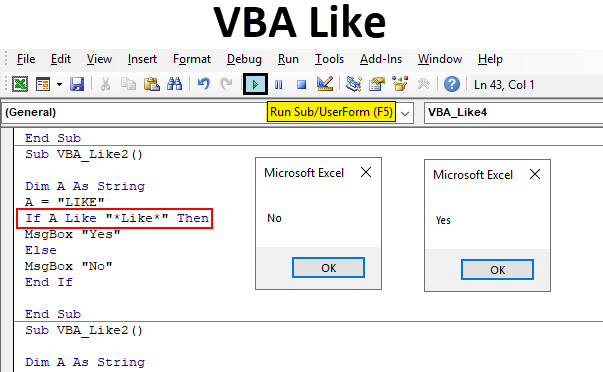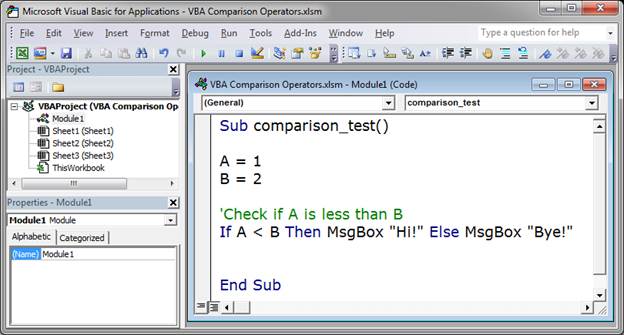
Each symbol is explained with its name, meaning, and formula writing example to help you understand them better. The output depends on the context, if the variables hold numeric value or string value. List of Symbols in Excel Formula and Their Meanings Here is a table that lists the symbols you can use in an excel formula. Note − Concatenation Operators can be used for both numbers and strings. Values are NumericĪssume variable A = "Microsoft" and variable B = "VBScript", then − Operator

If one, and only one, of the expressions evaluates to be True, the result is True.įollowing Concatenation operators are supported by VBA.Īssume variable A holds 5 and variable B holds 10 then −Īdds two Values as Variable. It is the combination of NOT and OR Operator. If a condition is true, then Logical NOT operator will make false.Ĭalled Logical Exclusion. Used to reverse the logical state of its operand. If any of the two conditions are True, then the condition is true.Ĭalled Logical NOT Operator. If yes, then the condition is true.Ĭalled Logical OR Operator. If yes, then the condition is true.Ĭhecks if the value of the left operand is greater than or equal to the value of the right operand. The symbol used to denote inequation when items are not equal is a slashed equals sign '' (Unicode 2260). Let's say you want to store a list of your favourite beverages in a single variable. The values must all be of the same data type. Yes, this is from programming languages such as C and C++. Array is a memory location capable of storing more than one value.
Symbol for does not equal in excel vba code#
If the values are not equal, then the condition is true.Ĭhecks if the value of the left operand is greater than the value of the right operand. Similarly, you may ask, how do you code does not equal C and the unix shells use for not equal, it comes from the maths symbol. The first method sources the value that from a cell, whilst the second method has the value (Exceldome) directly entered into the formula. If yes, then the condition is true.Ĭhecks if the value of the two operands are equal or not. This tutorial provides two Excel methods that can be applied to count cells that do not contain a specific value in a selected range by using an Excel COUNTIF function combined with the not equal to sign (>).
Symbol for does not equal in excel vba how to#
There are following comparison operators supported by VBA.Īssume variable A holds 10 and variable B holds 20, then −Ĭhecks if the value of the two operands are equal or not. Currently we are using the 'formula' macro and input Is there a way to remove new line characters in one go from all columnsLearn how to quickly remove line breaks in Excel with a few simple techniques (using Find and Replace, a formula method, and Remove Line Breaks Using VBA. Modulus operator and the remainder after an integer division Subtracts the second operand from the first VBA supports following types of operators −įollowing arithmetic operators are supported by VBA.Īssume variable A holds 5 and variable B holds 10, then − In Week 2, you will learn basic VBA expression entry, how to create user-defined. Here, 4 and 5 are called operands and + is called operator. Video created by for the course 'Excel/VBA for Creative Problem Solving, Part 1'. Have questions or feedback about Office VBA or this documentation? Please see Office VBA support and feedback for guidance about the ways you can receive support and provide feedback.An Operator can be defined using a simple expression - 4 + 5 is equal to 9. This example formats the third character in cell A1 on Sheet1 as bold. The Characters object isn't a collection.
 But in Excel, it is represented by greater than and less than operator sign <> between the values which we want to compare. Below is the Code to understand the use of the VBA Not Equal (<>) operator. Not Equal To generally is represented by striking equal sign when the values are not equal to each other.
But in Excel, it is represented by greater than and less than operator sign <> between the values which we want to compare. Below is the Code to understand the use of the VBA Not Equal (<>) operator. Not Equal To generally is represented by striking equal sign when the values are not equal to each other. If the one thing is equal to another, then it returns FALSE or else TRUE.
If this argument is omitted, this property returns the remainder of the string (everything after the Start character). Not Equal to Sign (<>) This not equal to sign is the inverse operator returns inverse results.If this argument is either 1 or omitted, this property returns a range of characters starting with the first character. SyntaxĮxpression A variable that represents a Range object. Use the Characters object to format characters within a text string. Returns a Characters object that represents a range of characters within the object text.


 0 kommentar(er)
0 kommentar(er)
